The Covid-19 pandemic which reared its ugly head in the Wuhan province of China in December 2019 was quick to wreak havoc across the globe in the mere matter of a few months. In the current global realities a newly emergent virus isn’t necessarily restricted to arbitrary borders and thus, soon a localized disease outbreak became a raging pandemic. More than a year since the beginning of its onslaught, the impact of the disease is yet to abate. Newly emergent and increasingly virulent mutant strains such as the recent Delta variant, continue to engender new waves of infections and deaths. In this bleak reality, vaccines symbolize a much needed ray of hope.
Global Vaccine Supply Chains
There are six main vaccines approved by the WHO that are being used widely in global distribution at present- Pfizer/BioNTech, Moderna, Johnson and Johnson, AstraZeneca/Oxford including Covishield by SII (Serum Institute of India), Sinopharm and Sinovac[1]. In the early stages of their development and production, the Pfizer and Moderna vaccine supply chains were restricted to the US and Europe. The expansion of manufacturing facilities was also limited to these regions. It is only in May 2021, that BioNTech announced the construction of a manufacturing facility in Singapore, but this plant is expected to be functional only by 2023. Other such partnership deals regarding manufacturing and distribution have been struck with companies in China and South Africa as well, but have yet to bear any fruit [2]. Unlike Pfizer and Moderna, AstraZeneca’s vaccine supply chains were more diversified and global from the initial stages only. AstraZeneca established partnerships with local manufacturers in several states and formed regional supply chains for its production and distribution. Most notably, it partnered with the SII, the largest vaccine manufacturer in the world and reached a landmark US$750 million agreement with Coalition for Epidemic Preparedness Innovations (CEPI) and Gavi to support the manufacturing and distribution of 300 million doses in addition to a licensing agreement geared towards supplying a billion doses to low-income countries [3]. The supply chains for the Johnson and Johnson vaccine emerged in the United States and their production was expanded in collaboration with firms in Europe. The vaccine’s single shot dosage has immense potential for mass inoculation in low-income countries and thus there has been a movement towards steadfast expansion of facilities in other states. In a bid towards significantly expanding its manufacturing, Johnson and Johnson entered into an agreement with an Indian firm, Biological. E. as early as August 2020, but unfortunately several hiccups along the way have thrown a spanner in the works and the envisioned mass production of the vaccine is yet to materialise [4] [5].
Sinopharm and Sinovac are China’s indigenously produced vaccines which were officially validated for emergency use by the WHO in June 2021 [6]. These vaccines are largely manufactured domestically with newly established production lines having an annual capacity of a whopping 300 million doses with plans of further expansion so as to meet both domestic and export demands [7].
Vaccine production is a complex process requiring a slew of special components which are supplied by firms spread across the globe. For the production of a single vaccine, approximately 200-300 specialized components are required. While most of these components are sourced from multiple countries, a majority of these essential raw materials come from US based firms [8]. As the pandemic reached its momentary crescendo in the first half of 2021 with the onslaught of the Delta variant, particularly in India, the vaccine supply chains received a serious jolt. India is the largest manufacturer of vaccines in the world, and its manufacturing centres came under severe strain as the country dealt with exponentially rising cases in the wake of the second wave and a mad scramble ensued to secure vaccine production components. America’s Defence Production Act added fuel to the fire as vaccine manufacturers in India decried the unavailability of essential production components [9]. Consequently, India had to hit pause on its vaccine exports and manufacturers like the SII and Biological. E. failed to fulfil several of their domestic and international supply commitments [10].
The inherently complex nature of these vaccine supply chains thus entails that large manufacturers like India cannot possibly manufacture vaccines without clear and smooth functioning supply chains in place that are not swayed by self-serving nationalistic fervour. In the race towards vaccinating the world and relegating Covid-19 to a bad memory, countries, particularly India and the US must work together towards ensuring an encumbered supply of vaccines especially to low income countries which continue to be largely unvaccinated.
Vaccine Inequity
As early as February 2020, companies like Moderna had already begun the Phase 1 of their clinical trials for a Covid-19 vaccine, while other pharmaceutical giants like Jannsen, BioNTech, Oxford and Novavax were quick to follow [11]. Subsequently, regulatory bodies in the US and the UK authorized public use of the vaccines in December 2020, within a year of the vaccine development process [12]. While this quick pace of vaccine development and distribution is a historically significant achievement, the vaccine availability has reflected the gaping inequities between developed and developing/underdeveloped states. Pre-pandemic, the global vaccine production was largely concentrated in Europe, India and North America. Naturally, the early vaccine availability was restricted to these production centres as well. States without indigenous vaccine manufacturing capabilities have to inadvertently depend entirely on vaccine imports and the whims of the vaccine manufacturers.
Early months of the vaccine rollout saw a scramble for vaccine purchases as wealthier nations focussed on pouring money into the creation of significant inventories of vaccine doses, largely in access of their population requirements. Over time, these countries have successfully managed to inoculate large sections of their population with domestic vaccination drives proceeding in full steam. In a sharp contrast, low income countries particularly in Africa, South Asia and Southeast Asia are struggling to secure vaccines for their populations. While 46 percent of the global population has received at least one dose of the Covid-19 vaccine, only 2.3 percent of people in low-income countries have received only one dose of the vaccine [13]. The image below shows the extent of this widening chasm in vaccination rates.
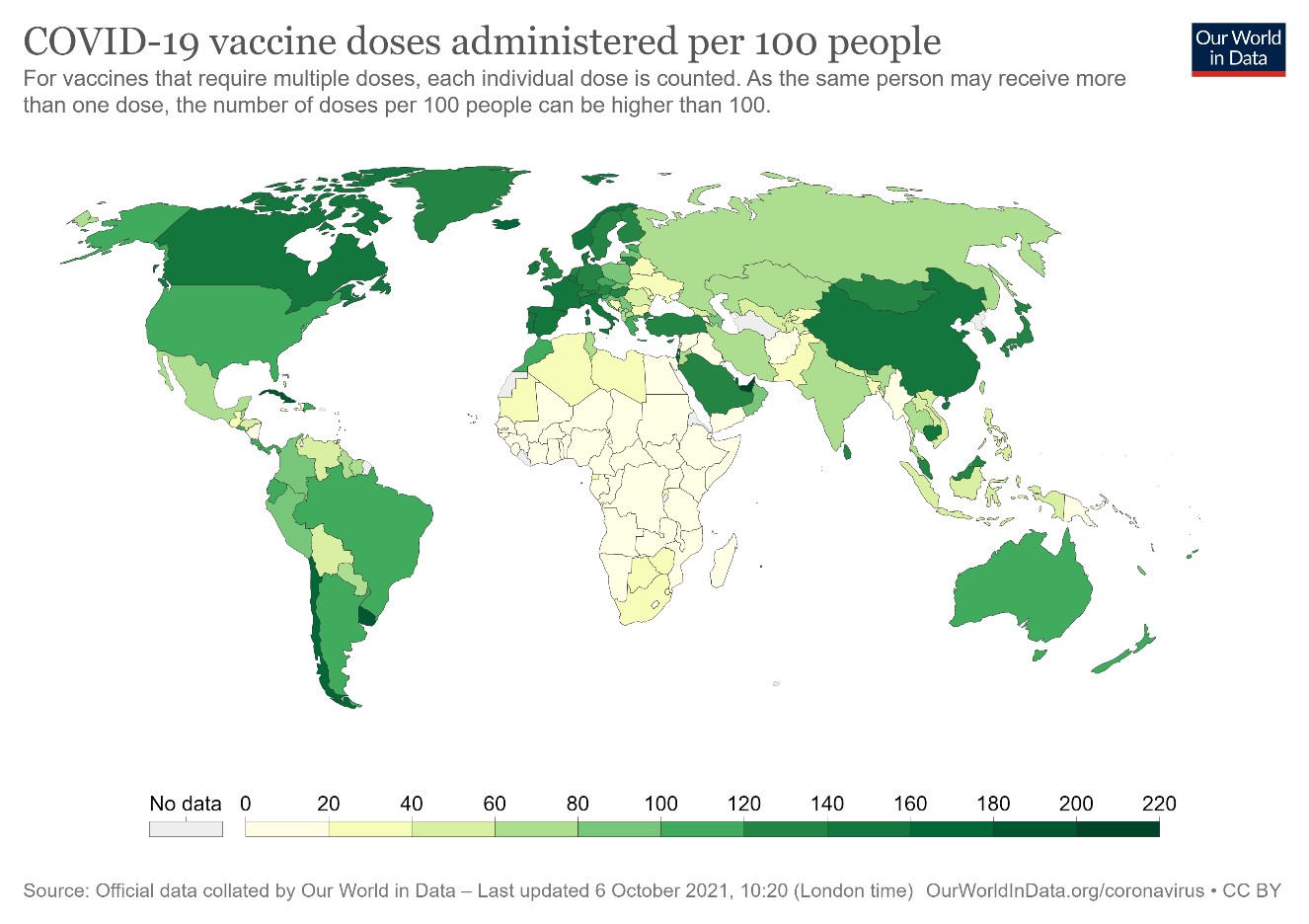
In an effort to reduce vaccine inequities, the Covid-19 Vaccines Global Access (COVAX) was launched in partnership by Gavi, CEPI, UNICEF and WHO [14]. This multilateral set up aimed to guarantee fair and equitable access to Covid-19 vaccines by emerging as a major buyer of vaccines and distributing them (paid or in donations) to poor states which lack resources.Initially, COVAX vied to deliver approximately two billion doses of vaccines worldwide in 2021 and 1.8 billion doses to 92 low income countries by 2022 [15]. Unfortunately, COVAX has so far failed to deliver on its promises and “stands half a billion short of its goal” [16]. While primarily established for ease of access to poorer countries, wealthier nations have bought several doses from COVAX for their own populations, putting a strain on the organization’s finite vaccine inventory [17]. The non-profit continues to suffer from vaccine supply shortages and resource crunch. Although, all six WHO approved vaccines are viable for deliveries via COVAX, so far only the Pfizer and AstraZeneca vaccines [18] (with a recent inclusion of China’s Sinovac vaccine) [19] have been used for distribution. In fact, AstraZeneca continues to have the greatest global reach with approximately 170 territories across the globe currently using the vaccine [20]. The disruption of AstraZeneca vaccine exports from India due to the crippling second wave extended further pressure and caused supply disruptions for low-income African countries which are primarily dependant on COVAX for their vaccine supplies [21].
Quad’s Vaccine Partnership
The freshly relevant Quad grouping, held its first leaders’ summit virtually on 12 March 2021. A ‘Quad Vaccine Partnership’ was announced at this high level meeting which sought to facilitate cooperative action geared towards expanding the manufacturing of safe and effective Covid-19 vaccines in 2021. It was announced that the Quad partners will work in cohesion with existing multilateral mechanisms such as COVAX and WHO and will endeavour towards the provision of vaccines to countries across the Indo-Pacific region [21].
With a focus on leveraging the individual strengths of the four countries, a reliable supply chain was formulated with, “vaccines developed in the US, manufactured in India, financed by Japan and the US, and supported by Australia” [23]. The Quad partners will thus cooperatively address the logistical and financial facets of vaccine production right through to the procurement and delivery stages of ‘safe and effective’ vaccines. The use of mechanisms such as the United States Defence Finance Corporation (DFC) and the Japan International Cooperation Agency (JICA) was announced to finance the expansion of manufacturing capacities in India. Consequently, DFC will work with India’s Biological E. to finance the manufacturing of at least 1 billion vaccine doses by the end of 2022 [24]. Similarly, JICA would provide concessional yen loans to the Government of India for the expansion of other such vaccine manufacturing facilities [25].
Apart from the creation and supply of vaccine deliverables, it was also announced that the Quad partners would work towards strengthening ‘last-mile’ vaccinations. The last mile logistics of Covid-19 vaccinations include communication and management of the vaccinations. Converting vaccines into vaccinations requires credibility and trust among the general public, ease of access, appropriate vaccine storage facilities and cold chains, and lastly, viable vaccination site availability. In this regard, it was announced that Australia will provide US$77 million for the provision of vaccines and last mile delivery support, particularly focusing on Southeast Asia. Australia also has existing commitments of US$407 million for regional vaccine access and health security which strives to provide complete vaccine coverage to nine Pacific-island countries and Timor Leste. Additionally, Japan would aid developing countries with vaccine purchases and offer cold-chain support with a grant-aid of US$ 41 million [26]. The Quad countries also officially launched a ‘Quad Vaccine Experts Group’, which will work towards providing essential scientific input and designing efficient implementation plans for the Quad’s vaccine efforts.
In the face of continuing vaccine inequity, the Quad’s efforts towards providing vaccines to developing and low income countries across the Indo-Pacific symbolize the grouping’s commitments towards creating a ‘Free, Open, Secure and Prosperous Indo-Pacific region’ [27]. The provision of equitable access to vaccine distribution emerges as a “central goal of the Quad as outlined by the leaders’ joint statement entitled The Spirit of the Quad” [28] [29]. Hinging on India’s immense potential for vaccine manufacturing with the pooled resources of the US, Japan and Australia, the Quad has the capacity to bridge the looming gaps in vaccine availability and distribution. Sub-regions in the Indo-Pacific namely South Asia, Southeast Asia, Pacific Island countries and East Africa house some of the largest unvaccinated populations in the world [30]. It thus becomes significantly imperative for the Quad to cooperate with organisations like COVAX which are currently dealing with vaccine shortages and work towards strengthening their supplies to these regions. Quad’s ambitious vaccine outreach initiative is not purely borne out of altruism, there is a strategic and competitive edge to it as well. China has been consistently increasing its vaccine exports across the globe with priority access to ASEAN and African countries [31]. It has sent more than 60 percent of its vaccine exports to Southeast Asia [32]. Quad’s announcements regarding vaccine supplies to these regions directly counter China’s vaccine diplomacy.
China’s Vaccine Diplomacy
Chinese vaccines were the first to reach poorer countries and were responsible for kick-starting their inoculation programmes against Covid-19 [33]. China has provided vaccines to 112 countries, spread across four geographical regions. Asia-Pacific has received the highest amount of Chinese vaccines out of all these regions. So far, 572 million doses have been provided in this region including 38 million in terms of donations [34]. Sinovac and Sinopharm are the leading Chinese vaccine manufacturers with Sinovac leading vaccine sales (717 million doses sold) and Sinopharm leading vaccine donations [35]. China categorizes its vaccines as ‘public goods’ and its vaccine diplomacy is largely bilateral [36]. Under the aegis of the ‘Health Silk Road’ China has been making a push for global health leadership [37]. China’s geopolitical objectives are parcelled within its vaccine diplomacy which is evident as a majority of its vaccine recipients are coincidentally also part of the Belt and Road Initiative (BRI) [38]. Also, it is interesting to note that although China has donated several vaccines, a large part of its vaccine exports have been paid for by the recipient countries. The exported volume of vaccine doses has been 100 times the volume of donations [39]. Apart from its predominant bilateral negotiations, China has also delivered several vaccines to states in Africa via COVAX [40]. China’s active posturing as a provider of public goods and as a global health leader have been construed as attempts at framing itself as a “solution to–rather than the cause of– the pandemic” [41].
As India’s vaccine diplomacy faltered under the strain of the devastating second wave, countries in South Asia had nowhere else to turn to, but towards China for their vaccine requirements. And China happily delivered. China’s top ten deliveries include countries like Indonesia (250m), Pakistan (58m), Philippines (40m), Bangladesh (34m), Cambodia (29m), Thailand (27m) and Sri Lanka (26m) [42], all situated within India’s neighbourhood.
But there is a chink in the armour, Chinese vaccines while widely exported have been surrounded by doubts regarding their efficacy. Studies show that while Sinovac reduces chances of infection by 54 percent and chances of hospitalization by 74 percent, other vaccines such as the AstraZeneca and the mRNA based Pfizer and Moderna vaccines fare much better [43]. These concerns have sharpened with the emergence of the delta strain as several states which originally imported the Chinese vaccines are looking at a third booster shot of either AstraZeneca or mRNA vaccines [44]. There is a growing preference for mRNA vaccines (Moderna and Pfizer) against the inactivated or weakened viral vector vaccines (Sinovac, AstraZeneca) as they are believed to be more effective against mutant strains of coronavirus [45]. As the western grip on mRNA vaccines has grown looser now that larger sections of their populations have received vaccinations, the availability of these vaccines is slowly increasing. This shift in preferences and concerns regarding protection from new strains has caused China’s vaccine exports to drop from 2.58 billion in July to 1.96 billion in August, a 21 percent reduction [46]. There is a noticeable swing away from China as US and Europe announced hefty vaccine donations of mRNA vaccines in addition to India’s resumption of AstraZeneca exports following the second wave [47].
Regardless of vaccine preferences, fact of the matter remains that large parts of the world still require vaccines and matters of efficacy aside, vaccines like Sinovac and AstraZeneca can be stored in standard refrigerators at 2-8 degree Celsius whereas Moderna needs to be stored at -20 degrees Celsius and Pfizer at -70 degrees Celsius. Thus, Sinovac and AstraZeneca are better candidates for inoculating populations in developing countries which lack facilities to store large amounts of vaccines at sub-zero temperatures [48].
The Quad Leaders’ Summit
The highly anticipated first physical Quad Leaders’ summit was recently held on 24 September 2021 at Washington D.C. Following the launch of the ambitious Quad Vaccine Partnership at the March Summit, several key announcements were made reiterating Quad’s commitment towards equitable access to vaccines in the Indo-Pacific and the world. The grouping has already delivered 79 million vaccine doses to countries in the Indo-Pacific and has additionally pledged to donate over 1.2 billion Covid-19 vaccine doses globally. Expanded manufacturing facilities at Biological E. in addition to India’s resumption of vaccine exports from October 2021 will help reduce the current vaccine supply gap [49]. According to India’s Health Minister, Mansukh Madaviya, “The country’s monthly vaccine output has since more than doubled and is set to quadruple to more than 300 million doses next month” out of which only the surplus will be exported [50]. India’s vaccine exports under its resumed Vaccine Maitri initiative will prioritize COVAX and its neighbourhood [51]. Other key announcements in the summit included the provision of a US$ 3.3 billion Crisis Emergency Support Loan by Japan for vaccine procurement in regional countries and a US$ 212 grant aid from Australia for vaccine purchases in Southeast Asia and the Pacific. Australia also reiterated its commitment towards coordinating Quad’s last mile delivery efforts and allocated US$ 219 million for the same [52]. To facilitate quantitative monitoring of the Quad’s vaccine efforts, the Quad Partnership Covid-19 Dashboard was also launched. According to the interactive dashboard, in addition to the 79 million vaccine doses, US$894 million of financial and technical support has also been delivered to countries in the region. While at present India is at the lower end of the vaccine dose deliveries spectrum, Johnson and Johnson’s manufacturing deal with Biological E. can provide added heft to Quad’s vaccine outreach [53]. Reports suggest that Indian companies have “set up capacity to produce nearly three billion Covid-19 vaccine doses a year” [54]. With the third quarter of 2021 a plethora of vaccines with Indian supply chains are coming into play. In addition to the existing Covishield (SII) and Covaxin (Bharat Biotech) the Russian Sputnik vaccine (Dr. Reddy’s) and Zydus Cadila’s three shot vaccine will be entering the market very soon. The SII is also going to produce Novavax which is scheduled for release in the fourth quarter of 2021 [55].
Increasing the manufacturing of vaccines in the global south is highlighted as a key step towards bridging vaccine inequities [56]. Vaccines such as AstraZeneca, Johnson and Johnson and Novavax have easier aspects of technology transfers (as compared to mRNA vaccines) and don’t require extreme cold storage facilities [57]. While production facilities for both Johnson and Johnson and Novavax have been set up in India in collusion with local manufacturers, vaccines produced at these facilities are yet to hit the market. In the quest towards providing vaccine equity, India within the Quad vaccine partnership has a crucial role to play.
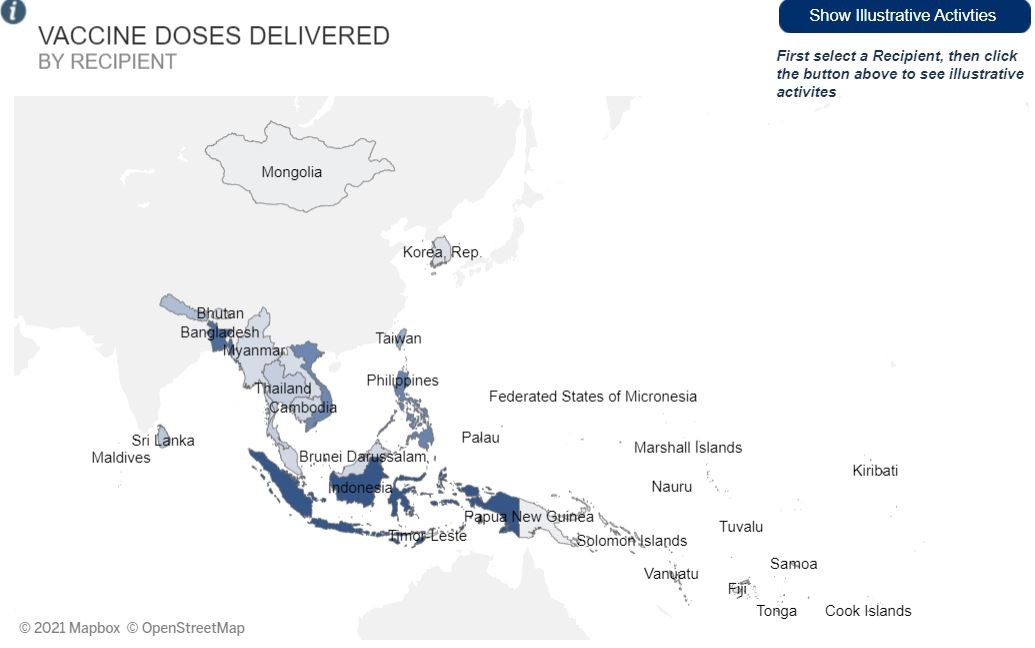
As indicated on the map displayed on the Quad Vaccine Partnership Dashboard, Quad’s vaccine distribution efforts are restricted to Southeast Asia and parts of the Pacific; in line with Washington’s understanding of the region. It leaves out the Indian Ocean island countries and the East African littoral states. Countries in this sub-region, particularly East Africa, are in dire need of vaccine support. Thus, India in addition to focussing on the neighbourhood must delegate vaccine supplies for these countries as well, disbursed via COVAX. India has always emphasised on the inclusive nature of the Indo-Pacific, consequently it is only natural that its vaccine exports to the region under the aegis of the Quad vaccine partnership highlight its commitments to inclusiveness and fostering prosperity across the entirety of the Indo-Pacific region.
The Quad’s focus on the creation of reliable vaccine supply chains and the equitable distribution of vaccines is indicative of the fine line it is treading between competition and cooperation in the Indo-Pacific region. The grouping is increasingly “seeking to link its security objectives with prosperity and development objectives” [58].
It is important to note that vaccines don’t end a pandemic, vaccinations do. Hence, it is increasingly crucial that apart from vaccines, countries are aided in the streamlining of their vaccine distribution processes with technology and know-how. It is in this regard that India’s announcement of making the CoWIN platform open source is a welcome development. The software can now be customised for use in any country and to all local requirements [59].
Viruses are incredibly wily creatures that continue to mutate. In the fight against Covid-19, the persistence of vaccine inequities which render large swathes of the global population unvaccinated, leave the virus with plenty of space to develop deadlier mutations that can eventually prove dangerous for even the ones who have been vaccinated. Tackling vaccine inequities is thus a shared responsibility with global consequences, and it is imperative that capable states stand up to this challenge.
References
[1]“Status of COVID-19 Vaccines within WHO EUL/PQ evaluation process” at https://extranet.who.int/pqweb/sites/default/files/documents/Status_COVID_VAX_29Sept2021_0.pdf (Accessed 27 August 2021).
[2] Chad P. Bown, Thomas J. Bollyky, ‘How Covid-19 supply chains emerged in the midst of a pandemic’, Working Paper, Peterson Institute of International Economics, WP 21-12, August 2021, pp. 13.
[3]“AstraZeneca takes next steps towards broad and equitable access to Oxford University’s potential COVID-19 vaccine” at https://www.astrazeneca.com/media-centre/articles/2020/astrazeneca-takes-next-steps-towards-broad-and-equitable-access-to-oxford-universitys-potential-covid-19-vaccine.html (Accessed 16 August 2021).
[4] Krishan N. Das, “India's Biological E looking to make 600 million J&J vaccine shots a year”, Reuters, 10 February 2021, URL:https://www.reuters.com/article/health-coronavirus-india-johnson-johnson/indias-biological-e-looking-to-make-600-million-jj-vaccine-shots-a-year-idUSKBN2AA0IV
[5] Chad P. Bown, Thomas J. Bollyky, No. 2, pp. 26.
[6]“Covid: What do we know about China's coronavirus vaccines?” at https://www.bbc.com/news/world-asia-china-57817591 (Accessed 21 August 2021).
[7] Shiming Yang, ‘Rising-Power Competition: The Covid-19 Vaccine Diplomacy of China and India’, Emerging Voices on the New Normal in Asia, National Bureau of Asian Research,19 March 2021, pp. 2.
[8] IndraniBagchi, “ Vaccines and supply chains: A perfect Storm”, The Economic Times, 27 May 2021, URL:https://economictimes.indiatimes.com/news/india/vaccines-and-supply-chains-a-perfect-storm/articleshow/82996690.cms
[9] PTI, “US export curbs can limit COVID-19 vaccine production, availability: SII CEO Adar Poonawalla”, The Economic Times, 5 May 2021, URL: https://economictimes.indiatimes.com/industry/healthcare/biotech/pharmaceuticals/indian-vaccine-giant-sii-warns-of-supply-hit-from-u-s-raw-materials-export-ban/articleshow/81351216.cms?from=mdr
[10] IndraniBagchi, “SII fails to deliver, New Delhi’s vaccine diplomacy hits hurdle”, The Times of India, 21 March 2021, URL: https://timesofindia.indiatimes.com/india/sii-fails-to-deliver-new-delhis-vaccine-diplomacy-hits-hurdle/articleshow/81610596.cms
[11] Chad P. Bown, Thomas J. Bollyky, No. 2, pp. 5.
[12] Ibid.
[13]“Statistics and Research: Coronavirus (Covid-19) Vaccinations” at https://ourworldindata.org/covid-vaccinations (Accessed 5 October 2021).
[14]“COVAX: Working for global equitable access to COVID-19 vaccines” at https://www.who.int/initiatives/act-accelerator/covax (Accessed 17 August 2021).
[15]“Covax: How many Covid vaccines have the US and the other G7 countries pledged?” at https://www.bbc.com/news/world-55795297( Accessed 17 August 2021).
[16] Benjamin Mueller, Rebecca Robbins, “Covid-19: Where a vast global vaccination program COVAX went wrong”, The Economic Times, 2 August 2021, URL: https://economictimes.indiatimes.com/news/international/world-news/covid-19-where-a-vast-global-vaccination-program-covax-went-wrong/articleshow/84967810.cms
[17]“Covax: Canada defends taking vaccines from sharing scheme” at https://www.bbc.com/news/world-us-canada-55932997 (Accessed 17 October 2021).
[18]“Covax: How many Covid vaccines have the US and the other G7 countries pledged?” at https://www.bbc.com/news/world-55795297( Accessed 17 August 2021).
[19]“China COVID-19 Vaccine Tracker”athttps://bridgebeijing.com/our-publications/our-publications-1/china-covid-19-vaccines-tracker/#Overseas_Manufacturers_of_Chinese_Vaccines (Accessed 6 October 2021).
[20]“Covax: How many Covid vaccines have the US and the other G7 countries pledged?” at https://www.bbc.com/news/world-55795297( Accessed 19 August 2021).
[21] Benjamin Mueller, Rebecca Robbins, No. 16
[22]“Fact Sheet: Quad Summit, March 12, 2021” at https://www.whitehouse.gov/briefing-room/statements-releases/2021/03/12/fact-sheet-quad-summit/ (Accessed 21 August 2021).
[23] Rezaul H. Laskar, “Vaccine Initiative, cooperation on key supply chains on 1st Quad Summit agenda”, The Hindustan Times, 11 March 2021, URL:
https://www.hindustantimes.com/world-news/vaccine-initiative-cooperation-on-key-supply-chains-on-1st-quad-summit-agenda-101615478639995.html
[24]“Fact Sheet: Quad Summit, March 12, 2021” at https://www.whitehouse.gov/briefing-room/statements-releases/2021/03/12/fact-sheet-quad-summit/ (Accessed 21 October).
[25] Ibid.
[26] Ibid.
[27]“Opinion: Our four nations are committed to a free, open, secure and prosperous Indo-Pacific region” at
https://www.washingtonpost.com/opinions/2021/03/13/biden-modi-morrison-suga-quad-nations-indo-pacific/ (Accessed 21 October 2021).
[28] Teesta Prakash, “The Quad gives a boost to India’s vaccine diplomacy”, The Interpreter, 16 March 2021, URL:
https://www.lowyinstitute.org/the-interpreter/quad-gives-boost-india-s-vaccine-diplomacy
[29] See: “Quad Leaders’ Joint Statement: ‘The Spirit of the Quad’”athttps://mea.gov.in/bilateral-documents.htm?dtl/33620/quad+leaders+joint+statement+the+spirit+of+the+quad#:~:text=1.,free%20and%20open%20Indo%2DPacific.
[30]“Vaccination rate by UN Subregion” at https://pandem-ic.com/share-of-population-vaccinated-fully-and-with-at-least-1-dose-against-covid-19-by-un-subregion/ (Accessed 23 August 2021).
[31] Shiming Yang, No. 7, pp. 2.
[32] Teesta Prakash, No. 28.
[33] Iain Marlow, Randy Thanthong-Knight, “China Vaccine Diplomacy Wavers as Nations Seek Western Shots”, Bloomberg, 30 September 2021, URL:
https://www.bloomberg.com/news/articles/2021-09-29/china-s-vaccine-push-falters-as-nations-switch-to-mrna-shots
[34]“China’s Vaccines Across Regions“ at https://bridgebeijing.com/our-publications/our-publications-1/china-covid-19-vaccines-tracker/#Overseas_Manufacturers_of_Chinese_Vaccines (Accessed 5 October 2021)
[35] Ibid.
[36] Shiming Yang, No. 7, pp. 2-3.
[37]“Mapping China’s Health Silk Road” at https://www.cfr.org/blog/mapping-chinas-health-silk-road (Accessed 24 August 2021).
[38] PurvajaModak,’ China’s Vaccine Diplomacy, the “Health Silk Road” and a Global Pledge’, Future Directions International, 15 July 2021, URL: https://www.futuredirections.org.au/publication/chinas-vaccine-diplomacy-the-health-silk-road-and-a-global-pledge/
[39] Shiming Yang, No. 7, pp. 3.
[40]“Vaccine Diplomacy: China and SinoPharm in Africa” at https://www.cfr.org/blog/vaccine-diplomacy-china-and-sinopharm-africa (Accessed 24 August 2021).
[41] Ibid.
[42]“China’s Vaccines Across Regions“ at https://bridgebeijing.com/our-publications/our-publications-1/china-covid-19-vaccines-tracker/#Overseas_Manufacturers_of_Chinese_Vaccines (Accessed 5 October 2021)
[43]“How do China’s COVID vaccines fare against the Delta variant?” at https://fortune.com/2021/08/31/china-covid-vaccine-sinovac-sinopharm-delta-variant-effective/ (Accessed 26 August 2021).
[44] Iain Marlow, Randy Thanthong-Knight, No. 33
[45]“Understanding mRNA COVID-19 Vaccines” at https://www.cdc.gov/coronavirus/2019-ncov/vaccines/different-vaccines/mrna.html (Accessed 21 August 2021).
[46] Iain Marlow, Randy Thanthong-Knight, No. 33
[47] Ibid
[48]“Covid: What do we know about China's coronavirus vaccines?” at https://www.bbc.com/news/world-asia-china-57817591 (Accessed 26 August 2021).
[49]“Fact Sheet: Quad Leaders’ Summit, September 24, 2021” at https://www.whitehouse.gov/briefing-room/statements-releases/2021/09/24/fact-sheet-quad-leaders-summit/ (Accessed 27 August 2021).
[50]“India to resume COVID vaccine exports to COVAX, neighbours”, Al Jazeera, 20 September 2021, URL:
https://www.aljazeera.com/news/2021/9/20/india-covid-vaccine-exports-covax
[51] Ibid.
[52]“Fact Sheet: Quad Leaders’ Summit, September 24, 2021” at https://www.whitehouse.gov/briefing-room/statements-releases/2021/09/24/fact-sheet-quad-leaders-summit/ (Accessed 27 August 2021).
[53] Krishan N. Das, No.4.
[54]“India to resume COVID vaccine exports to COVAX, neighbours”, Al Jazeera, 20 September 2021, URL:https://www.aljazeera.com/news/2021/9/20/india-covid-vaccine-exports-covax
[55] IndraniBagchi, No. 8.
[56] Amy Maxmen, “The fight to manufacture COVID vaccines in lower-income countries”, Nature, 15 September 2021, URL:https://www.nature.com/articles/d41586-021-02383-z
[57] Chad P. Bown, Thomas J. Bollyky, No. 2, pp.27.
[58] Teesta Prakash, No. 28.
[59] Sohini Das, “CoWIN goes global: India makes tech open source, 142 nations show interest”, Business Standard, 6 July 2021, URL: https://www.business-standard.com/article/current-affairs/cowin-goes-global-india-makes-tech-open-source-142-nations-show-interest-121070501046_1.html
(The paper is the author’s individual scholastic articulation. The author certifies that the article/paper is original in content, unpublished and it has not been submitted for publication/web upload elsewhere, and that the facts and figures quoted are duly referenced, as needed, and are believed to be correct). (The paper does not necessarily represent the organisational stance... More >>
Image Source: https://www.pexels.com/photo/covid-19-vaccines-on-red-surface-5994572/

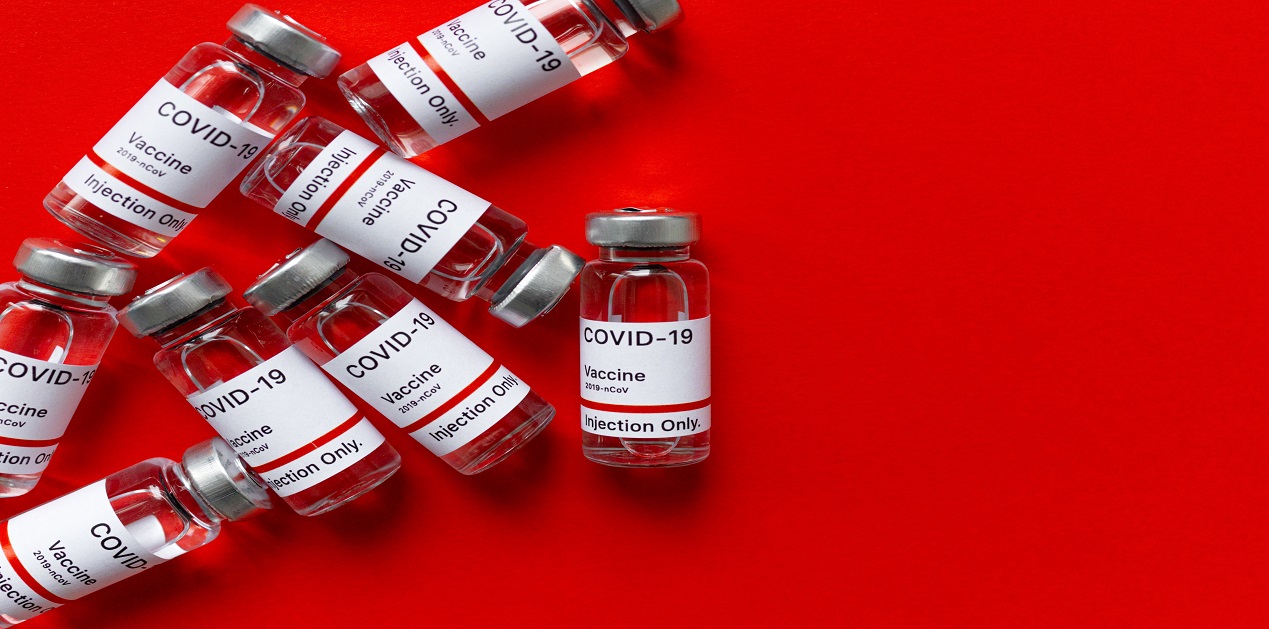

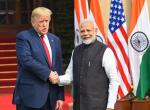
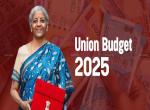

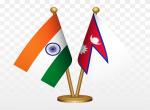
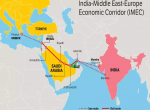
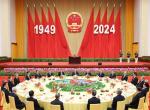
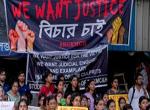

Post new comment